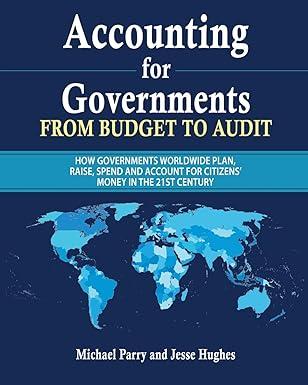Question
Taylor is one of three senior managers submitting internal proposals for a capital budgeting project. Only one manager is selected each year to receive funding
Taylor is one of three senior managers submitting internal proposals for a capital budgeting project. Only one manager is selected each year to receive funding that can reach up to one million dollars. The last three managers that won the bid were promoted to vice president and given very handsome salary increases. Taylor asked each member of the department to gather information on projected costs and revenue, and was assembling the pieces into a final project budget. At the end of the analysis, Taylor stared at the computer in disbelief. The Internal Rate of Return (IRR) was estimated to come in at 7.5%, but every project approved in the last few years had an 8% IRR or higher. Taylor examined the numbers for a long time and realized that by reclassifying one project expenditure as a normal operating expense instead of a project expense, the projected IRR could be adjusted upwards to 8.15%. Taylor knew the higher IRR would improve the likelihood of getting the funding and the cost reclassification to operations was unlikely to be discovered.
Decision 1 Taylor decided to turn in the proposal based on the higher projected IRR due to the cost reclassification. Consequences of Behavioral Action: The project was funded and, when completed, the IRR came in at 8%. No one noticed the added expenditure that had been reclassified to normal operations, thus understating operating income. One year later Taylor was promoted to vice president.
Decision 2 Taylor decided to turn in the proposal based on the higher projected IRR due to the cost reclassification. Consequences of Behavioral Action: The project was funded and, when completed, the IRR came in at 8%. During the annual audit a few months later, the project expenditure that had been reclassified to normal operations was discovered and reassigned to the project. The IRR for the project was recalculated to be 7.4%. Taylor was not promoted.
Decision 3 Taylor decided to turn in the proposal based on the higher projected IRR due to the cost reclassification. Consequences of Behavioral Action: The project was funded and, when completed, the IRR came in much higher than expected. Taylor was able to reverse the reclassification by reinstating the omitted expenditure back to the project rather than normal operations and still achieve an IRR of 8% on the project. One year later Taylor was promoted to vice president.
Decision 4 Taylor decided to turn in the proposal with a 7.5% IRR and it was not accepted. Taylor was not promoted.
Next is a set of adjectives that allow your group to discuss their general beliefs about the situation/ issue above regarding Taylors behavioral action. Think of each of them in context of all 4 decision scenarios.
FAIR -- UNFAIR
JUST -- UNJUST
MORALLY RIGHT -- NOT MORALLY RIGHT
ACCEPTABLE TO MY FAMILY --UNACCEPTABLE TO MY FAMILY
UNIMPORTANT ISSUE --IMPORTANT ISSUE
I believe this scenario overall involves an ethical dilemma: DISAGREE -- AGREE
The probability I would behave the same way as Taylor:
LIKELY -- UNLIKELY
DEFINITELY WOULD NOT -- DEFINITELY WOULD
The probability other groups will decide that they would behave the same way as Taylor is:
LIKELY -- UNLIKELY
DEFINITELY WOULD NOT -- DEFINITELY WOULD
If I were Taylors spouse/parent, I would offer the following advice
Think through the following as a group and include your group conclusions in your paper
The overall harm (if any) from Taylors behavioral action would be very small.
Most people would agree that Taylors behavioral action is wrong.
There is a very small likelihood that Taylors behavioral action will actually cause any harm.
Taylors actions will harm very few people (if any).
It is important to do the right thing, even if ones self and/or family suffer greatly as a result.
Before knowing the consequences of an action, it can be said to be either right or wrong.
It is wrong to decide whether or not to perform an act by balancing the acts positive consequences against its negative consequences.
Some actions are simply wrong, even though they may result in positive consequences for many people.
There are important rules determining whether an action is right or wrong that do not depend on the consequences of the action.
A right action is one that provides the greatest good for the greatest number of people.
A right action is one that provides he greatest good for me, my family, and those for whom I care greatly.
Using the discussion in your group as a basis, write a 3 to 4 page paper (one per group) that explains what Taylor should do when presented with the above decision. Explain why the recommended decision is the correct and the most ethical. Explain why it could be difficult to make the recommended choice. What would your group recommend that Taylors company do to make the possibility that Taylor and other managers will make ethical choices.
Step by Step Solution
There are 3 Steps involved in it
Step: 1

Get Instant Access to Expert-Tailored Solutions
See step-by-step solutions with expert insights and AI powered tools for academic success
Step: 2

Step: 3

Ace Your Homework with AI
Get the answers you need in no time with our AI-driven, step-by-step assistance
Get Started


